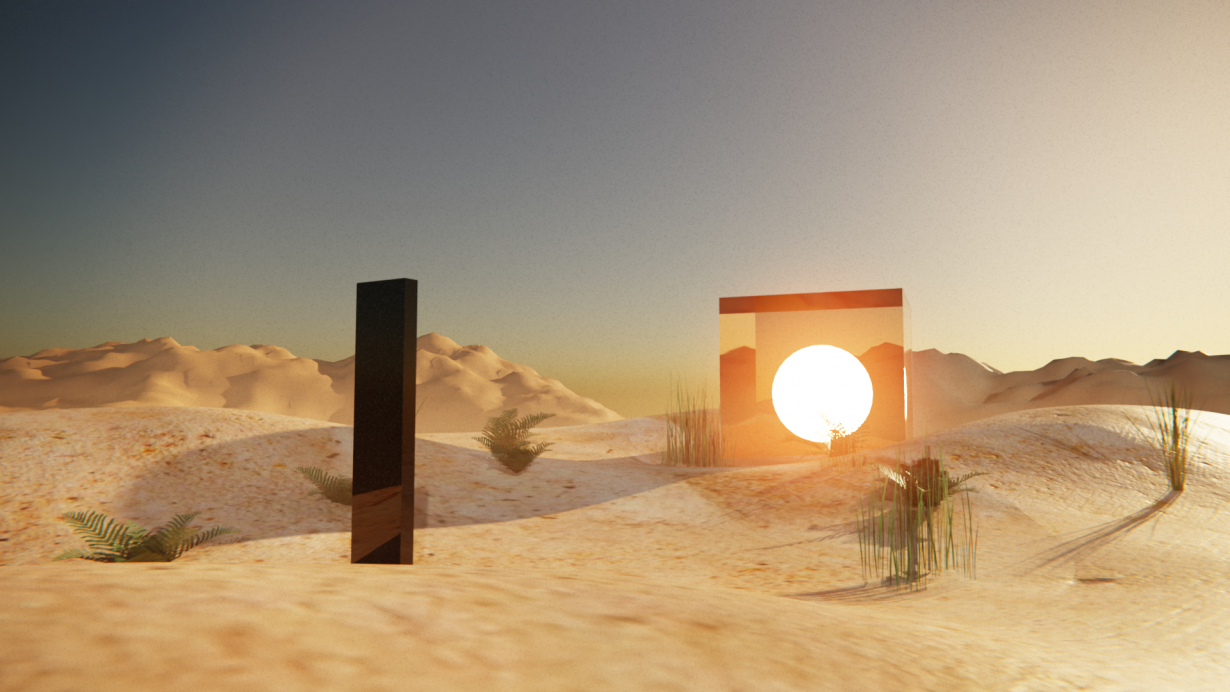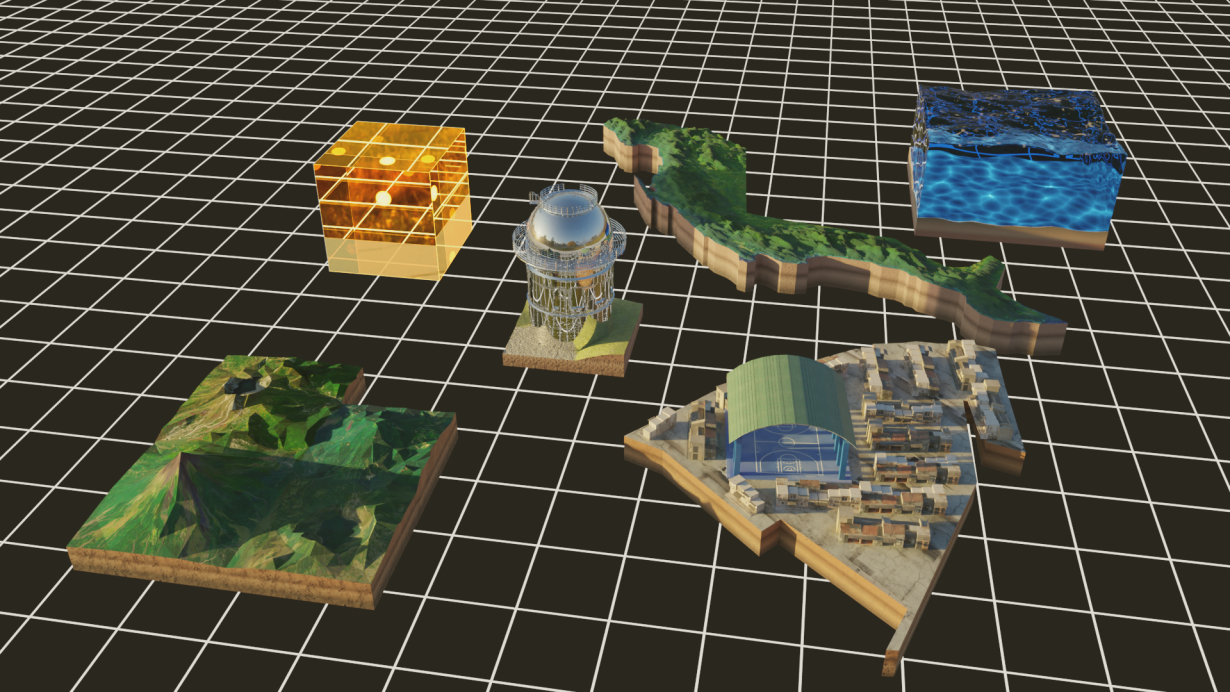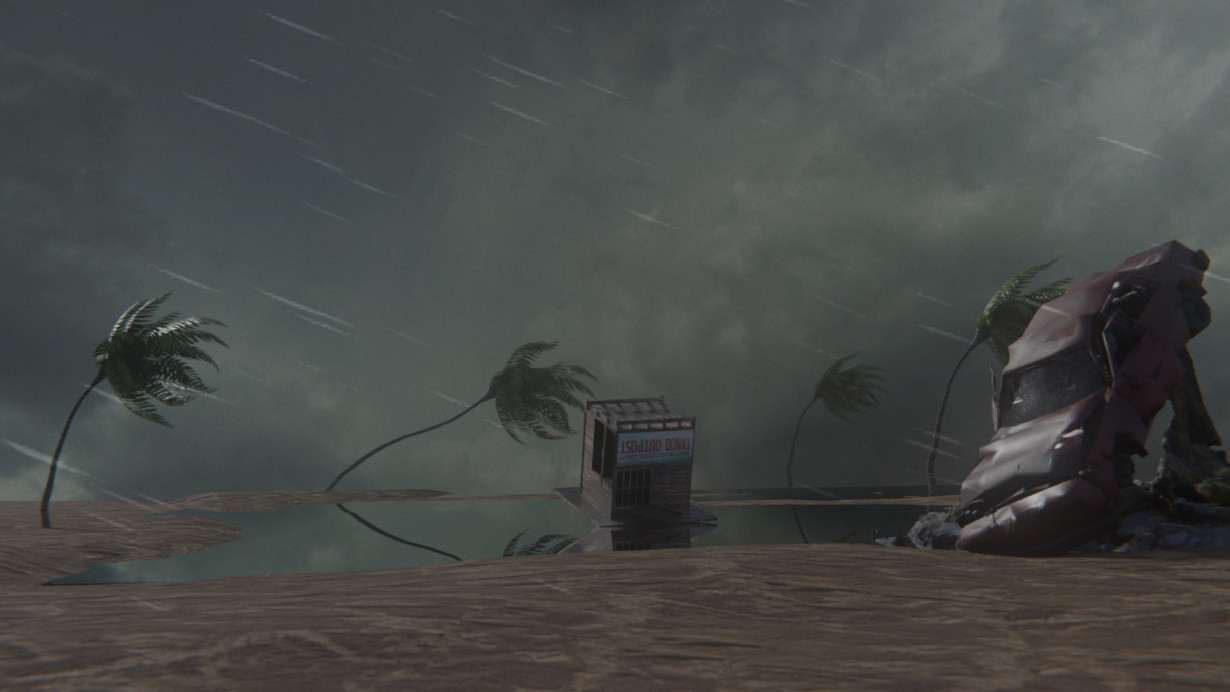Selected by Marv Recinto
A transparent cube confining a glowing yellow orb is suspended above endless sand dunes. To one side, a few green plants that sprout from the sand lead to a reflective black column jutting into the ominous grey sky; just ahead, a half-buried billboard reads, in Tagalog, ANG KRISIS NG KLIMA AY KRISIS NG KULTURA (‘The crisis of climate is a crisis of culture’). This desolate environment is INIT (‘hot’), one of the seven digital biomes that comprise Derek Tumala’s web application project Porensiko ng Klimang Tropikal (Tropical Climate Forensics) (2022). In making the work, Tumala drew on meteorological and seismographic archives alongside current forecasts of the Philippine climate. As the first artist in residence at the Manila Observatory at Ateneo de Manila University, Tumala collaborated with scientists to trace the climate crisis’s impact on the Philippines and visualise the environmental destruction that would result. In Tropical Climate Forensics the artist uses a digital-3D style to portray what he described, in a 2022 lecture at the Museum of Contemporary Art and Design in Manila, as the “climate crisis in the local context”.

The landing page of Tropical Climate Forensics renders each biome as miniature icons floating on a slowly rotating white grid suspended in the sky. Click on the swirling vortex icon and you’re dropped into the eye of a storm in BAGYO (‘typhoon’), where palm trees have toppled over and buildings are flooded. Entering the jiggling blue cube TUBIG (‘water’), you encounter an audiovisual poem titled ‘Uncertain Sea Without Horizon’ (2021), by Ecuadorian writer Maria Rocío Cardoso Arias, which you can hear in the original Spanish, or translated into English or Tagalog, set over a dark and foreboding seascape. In OBSERBATORYO, Tumala renders the Manila Observatory, founded by the Jesuits in 1865, to remind the viewer of the institution’s colonial heritage and framework while simultaneously stressing its importance to local research. Tumala choses to focus on these biomes – along with KOMUNIDAD (‘community’), GUBAT (‘forest’) and BULKAN (‘volcano’) – as the key sites of environmental vulnerability in the Philippines.

Tumala, hailing from an archipelago that rests on the Pacific’s tectonic ‘Ring of Fire’, challenges the seemingly ‘universal’ narrative of environmental devastation: “The idea of the climate crisis is always about fossil fuels, melting ice, heatwaves, which is a very Global North context or very Western context,” said Tumala in the same lecture, alluding to how this discourse affects local perceptions. “When we experience so much heat and typhoons here, it feels like it’s normal because we’re in the Philippines, but it’s not true. We shouldn’t be experiencing this.” The country’s proximity to the equator, the artist is saying, can seem to normalise extreme heat, but in actuality the rising temperatures are abnormal. Tumala’s artistic practice, ranging from virtual reality and video, to installation, sculpture, drawing and photography, is an attempt at articulating the effects of climate devastation in a specific geographical context, advocating for a decolonial ecology.

In Kayamanan ng Pilipinas (Treasures of the Philippines, 2020–21), the live atmospheric conditions of Manila are transmitted from an online weather program to a digital projection of a vibrant scene of native flora and fauna. Weather shifts in real life are reflected in the projection and thus illustrate the conditions of Manila’s weather to audiences indoors (where it was commissioned for the city’s SM Mega Tower) or abroad (like in London’s Delfina Foundation). Similarly, for the papier-mâché sculpture titled What Looks Like Burning Is Not Really Burnt (2023), Tumala creates a model of a mountain used for farming in Palawan, where its bottom portion remains lush and green while the top portion is singed black – to represent the precolonial practice of uphill burning called kaingin. The Spanish condemned this practice, and to this day it is considered environmentally destructive; however, when controlled, it nourishes the soil for crop cultivation. Tumala here attempts to challenge the inherently Eurocentric notion of environmental care the Philippines has inherited by illustrating the sustainability of Indigenous practices that work holistically with the land, rather than exploitatively.
In 2016 the artist initiated a collective called STEAM/Projects that brings together artists who also operate in other disciplines – such as software engineering, virtual landscape design and computer science – to encourage multidisciplinary practice. Throughout Tumala’s varied practice is a series of seemingly disparate crossovers – art and science, digital and organic, local and global, personal and collaborative. The resulting artworks are often visually elegant, playing between subtlety and vivacity, to draw the viewer in and inspire a broader, geographically decentralised notion of the climate catastrophe.


Derek Tumala is a visual artist based in Manila working with emerging technologies, the moving image, industrial materials and objects. He earned his BFA from Manila’s University of Santo Tomas in 2006. He is presenting a new installation, titled a warm orange coloured liquid, in February as part of Art Fair Philippines.
Marv Recinto is managing editor of ArtReview
